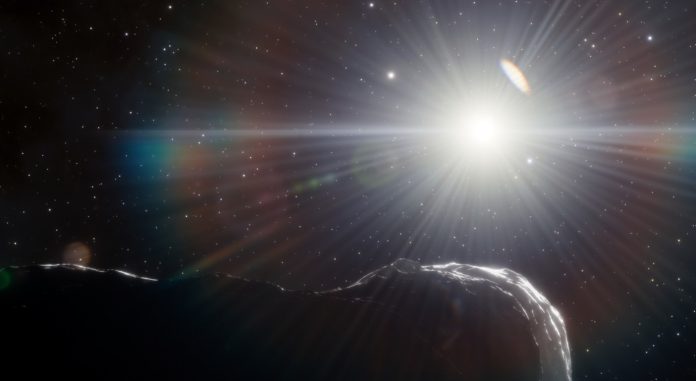
Scientists at CU Boulder and NASA have recently conducted a comprehensive study to assess the risks posed by large asteroids that orbit near Earth.
The researchers have identified around 20 asteroids that warrant further investigation to ensure they do not pose a threat to life on our planet over the next thousand years.
It is important to note that the chances of any of these asteroids colliding with Earth are extremely low, with almost zero risk in the coming century.
Nevertheless, due to the potential catastrophic consequences of an impact, it is crucial to thoroughly evaluate their trajectories, according to Oscar Fuentes-Muñoz, the lead author of the study.
Fuentes-Muñoz, a doctoral student in Aerospace Engineering Sciences, emphasizes that the study’s results are not alarming. However, predicting events so far into the future is challenging due to the many uncertainties involved.
The findings of the study will be published in an upcoming issue of The Astronomical Journal.
This study provides an unprecedented look into Earth’s position in the solar system, revealing that it is surprisingly crowded. Scientists estimate that approximately 962 asteroids, each at least a kilometer wide, periodically pass by our planet.
To determine which asteroids might come uncomfortably close, researchers employed innovative mathematical tools to predict the future paths of 851 large asteroids over the next thousand years. Most of these asteroids are expected to maintain a safe distance from Earth, but a few showed less predictable orbits.
One such asteroid, named 7482 (1994 PC1), appeared to intersect with Earth’s orbit frequently in the coming centuries, making it particularly noteworthy.
Fuentes-Muñoz emphasizes that the primary outcome of the study is the need for further investigation. By gathering more information about these asteroids, scientists can completely rule out any potential impact risks in the next millennium.
Although humans possess the technology to detect many large objects that pass by Earth, similar to the dinosaurs, there is little we can currently do to prevent a collision.
However, early detection of potentially dangerous asteroids is crucial. Fuentes-Muñoz explains that making a small deflection of an asteroid decades in advance is far more effective than attempting to do so just a few years or months before an expected impact.
Predicting the precise location of an asteroid hundreds of years in the future is challenging due to various factors, including gravitational influences from Venus and the Sun’s heat, which subtly alter an asteroid’s trajectory over time.
The researchers aimed to minimize these uncertainties in their study. The team included scientists from NASA’s Jet Propulsion Laboratory and a distinguished professor of aerospace engineering sciences at CU Boulder.
Fuentes-Muñoz likens an asteroid impact to a traffic collision. Just like two cars colliding, two asteroids need to be at the same intersection and arrive there simultaneously for a collision to occur.
Using computer simulations, the researchers identified when the orbits of near-Earth asteroids might intersect with Earth’s path around the Sun. They focused on asteroids with unpredictable timings—those that could potentially coincide with Earth’s position at a given time.
Although the list of asteroids that meet both criteria for a possible impact is relatively short, a few asteroids stand out. One such asteroid is 7482 (1994 PC1), which was first observed in 1974 and measures about two-thirds of a mile in length.
While most asteroids studied by the team briefly cross Earth’s orbit and then move away, 7482 (1994 PC1) is expected to remain in close proximity to Earth for the majority of the next millennium.
However, there is no cause for immediate concern. Fuentes-Muñoz reassures that more information is required to rule out an impact, but the likelihood of such an event remains low.
He concludes that as scientists gather additional data about asteroids like 7482 (1994 PC1), they can determine with greater certainty the chances of a collision occurring in the future.
Fuentes-Muñoz acknowledges the curiosity surrounding his research and assures people that if there is an impending threat, he will inform the public promptly.



